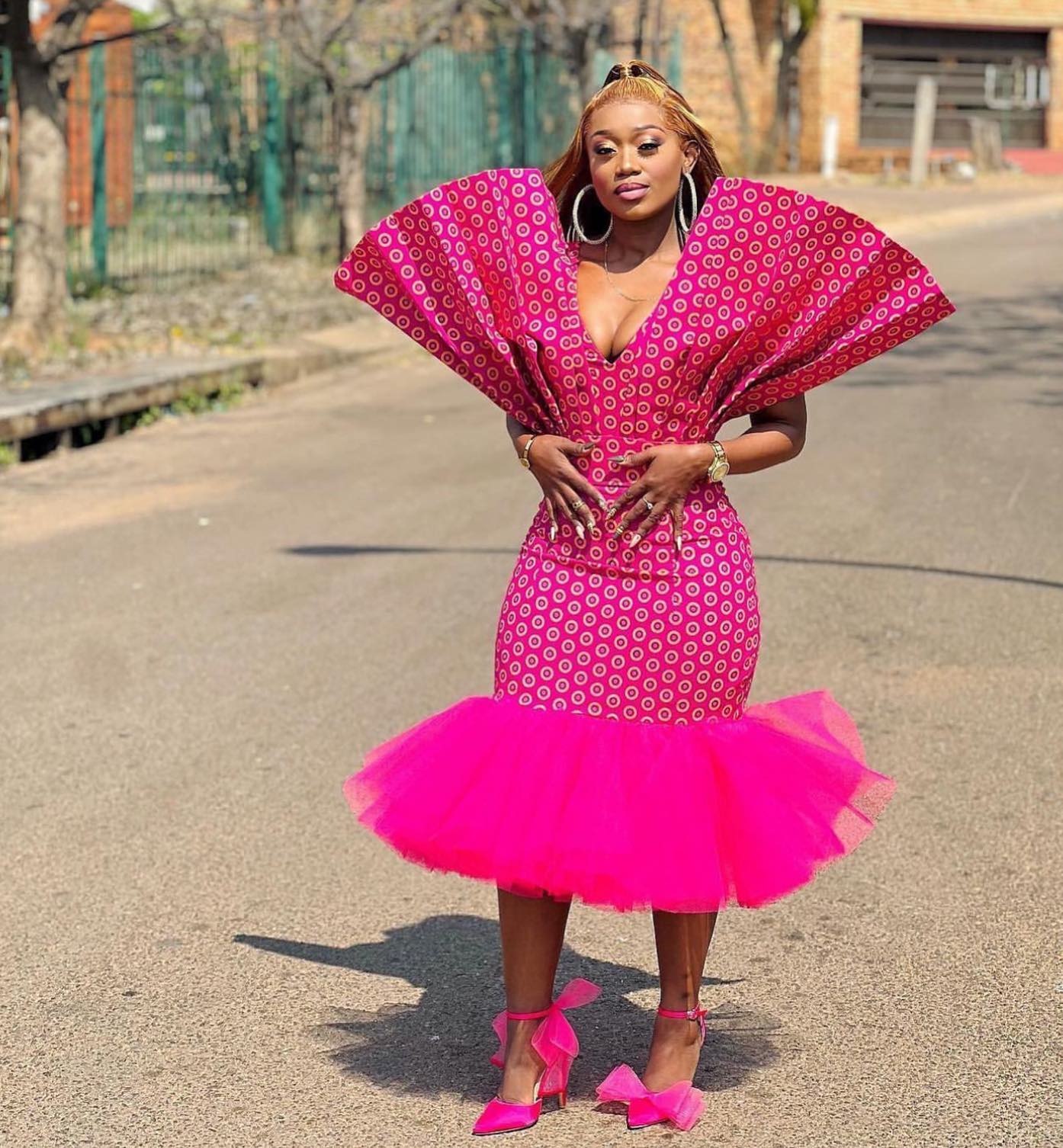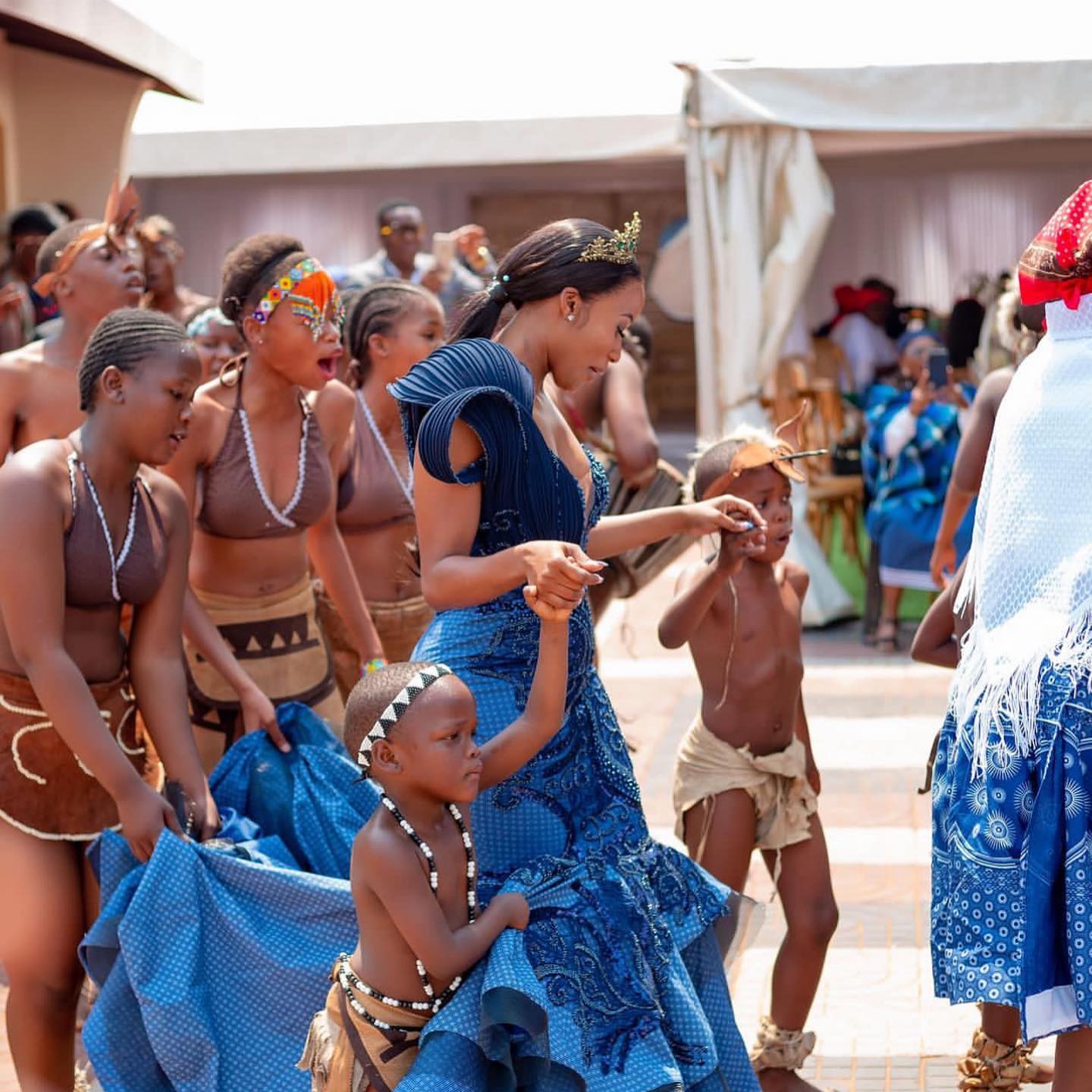The Evolution of Tswana Traditional Attire 2024: From Past to Present
The Evolution of Tswana Traditional Attire 2024: From Past to Present

Introduction
Tswana traditional attire holds a significant place in the cultural heritage of Botswana. Over the years, it has evolved, reflecting the changing times while retaining its essence and importance. This article will explore the journey of Tswana traditional attire from the past to the present, highlighting its importance and the various changes it has undergone.
Importance of Tswana Traditional Attire
Tswana traditional attire is not merely clothing; it is a symbol of identity, pride, and cultural heritage. It showcases the rich history and traditions of the Tswana people, serving as a visual representation of their values, beliefs, and social status. Wearing traditional attire during ceremonies, festivals, and special occasions is a way for the Tswana people to honor their roots and celebrate their unique cultural heritage.
Overview of the Evolution of Tswana Traditional Attire
The evolution of Tswana traditional attire can be traced back to pre-colonial times when it consisted of animal skin garments adorned with beads and various embellishments. With the arrival of European influence, the attire underwent significant changes. The introduction of cloth, such as shweshwe fabric from Europe, brought new patterns, colors, and designs to Tswana attire.
In recent years, there has been a resurgence of interest in Tswana traditional attire. Designers and fashion enthusiasts are embracing the fusion of modern and traditional elements, creating innovative designs that appeal to a wider audience. This evolution has not only preserved the cultural significance of Tswana attire but has also made it relevant in contemporary fashion.
From its humble beginnings to its current standing as a symbol of cultural pride, the evolution of Tswana traditional attire is a testament to the resilience and adaptability of the Tswana people.
Traditional Tswana Attire: The Past
Historical significance of Tswana traditional attire
Tswana traditional attire holds deep historical significance within the culture of Botswana. It is not just clothing; it represents a way of life, traditions, and values of the Tswana people. Wearing traditional attire was a way for individuals to proudly display their heritage and social status. It acted as a symbol of identity that connected community members and showcased the rich history of the Tswana people.


Traditional garments worn by men and women in the past
In the past, Tswana men often wore a traditional outfit known as the “leteisi,” which consisted of a sleeveless shirt, long trousers, and a hat. These garments were made from animal skins and were adorned with intricate beadwork and decorative elements. Women, on the other hand, wore a dress called “thobega” which was made from different fabrics and featured vibrant colors and patterns. Jewelry, such as necklaces, bracelets, and rings, were also an essential part of traditional Tswana attire.
The traditional garments worn by men and women reflected the cultural values and social customs of the Tswana people. Each piece of clothing was carefully crafted and imbued with meaning, making Tswana traditional attire an integral part of the community’s identity.

The Influence of Colonialism and Modernization
Impact of colonialism on Tswana traditional attire
The arrival of colonial powers in Botswana had a profound impact on Tswana traditional attire. With the introduction of Western clothing and fashion trends, many Tswana people began to adopt Western-style clothing, gradually distancing themselves from their traditional attire. The influence of colonialism led to a shift in clothing preferences, with Tswana individuals aspiring to European styles as a symbol of modernity and progress. Traditional garments like the “leteisi” and “thobega” started to lose popularity, particularly among the younger generation.

Introduction of Western clothing and its influence on Tswana attire
The introduction of Western clothing had a significant influence on the evolution of Tswana traditional attire. Western garments, such as shirts, trousers, and dresses, started to replace traditional clothing in everyday situations. This shift was driven by a desire to align with global fashion trends and to adopt a more modern and cosmopolitan appearance. However, despite the adoption of Western clothing, Tswana traditional attire still holds its significance during cultural events, ceremonies, and festivals. The past and present of Tswana traditional attire reflect the ongoing negotiation between preserving cultural heritage and embracing modern influences.

Contemporary Tswana Attire
Transition from traditional to contemporary Tswana attire
The evolution of Tswana traditional attire has been shaped by the influences of colonialism and modernization. With the arrival of colonial powers, Tswana individuals began embracing Western clothing styles, gradually moving away from their traditional attire. This shift was driven by a desire to align with global fashion trends and embrace a more modern appearance. However, despite the adoption of Western clothing in everyday situations, Tswana traditional attire still holds its significance during cultural events, ceremonies, and festivals. It is during these occasions that the beauty and richness of traditional garments such as the “leteisi” and “thobega” are celebrated and cherished.

Modern adaptations and designs in Tswana clothing
In recent years, there has been a resurgence of interest in Tswana traditional attire, with a growing appreciation for its unique cultural significance. Designers and fashion entrepreneurs have embraced the opportunity to create modern adaptations of Tswana clothing, blending traditional elements with contemporary styles. This has resulted in the emergence of innovative designs that capture the essence of Tswana culture while appealing to a broader audience. These modern adaptations not only preserve the heritage of Tswana attire but also showcase the creativity and craftsmanship of local designers. As a result, Tswana clothing has gained recognition both within the country and internationally, becoming a symbol of cultural pride and identity.

Celebrating Tswana Heritage: The Present
Promotion of Tswana traditional attire in modern society
In recent years, there has been a significant shift in the perception and promotion of Tswana traditional attire in modern society. People are now embracing their cultural heritage and expressing it proudly through their clothing choices. The younger generation, in particular, has taken a keen interest in preserving and revitalizing Tswana traditions, including traditional attire. They understand the importance of celebrating their roots and showcasing their unique cultural identity through what they wear.
Many organizations and individuals have played a crucial role in promoting Tswana traditional attire. Cultural festivals and events dedicated to showcasing Tswana culture have provided a platform for designers and artisans to exhibit their creations. These events not only serve as a celebration of Tswana heritage but also spark interest and curiosity among those outside the culture.


Influence of Tswana fashion designers and influencers
Tswana fashion designers and influencers have also played a vital role in shaping the perception and popularity of Tswana traditional attire. These talented individuals have seamlessly blended traditional elements with modern styles, creating captivating designs that appeal to a broader audience. Their innovative approach has not only breathed new life into Tswana clothing but also gained recognition both within the country and internationally.
Social media platforms have been instrumental in spreading the influence of Tswana fashion designers and influencers. They use these platforms to showcase their designs, educate their audience about the significance of Tswana traditional attire, and inspire others to embrace their cultural heritage. Their efforts have not only created a demand for Tswana clothing but have also fostered a sense of pride and appreciation for Tswana culture.
As we embrace the present and celebrate Tswana heritage, it is evident that Tswana traditional attire has evolved from being solely associated with cultural events to becoming a symbol of cultural pride and identity in modern society. Through the efforts of individuals and organizations dedicated to promoting Tswana culture, the beauty and significance of Tswana traditional attire continue to thrive.

















Comments are closed.